The eMAEX-System – C: MANAGING OUTPUT
Each of the three stages, identifying, evaluating and analyzing the pathos scenes, generates a specific output, which we integrate in a database.
Remember the heuristic assumptions: The war film genre can be described through a certain number of standard scenes which are assigned to distinguishable realms by narrative patterns and by aesthetic strategies. On the managing output level the assumptions are implemented to deal with the material.

Within the user interface of the database, the films are embedded and organized as sets of pathos scenes.
An example for the film Bataan.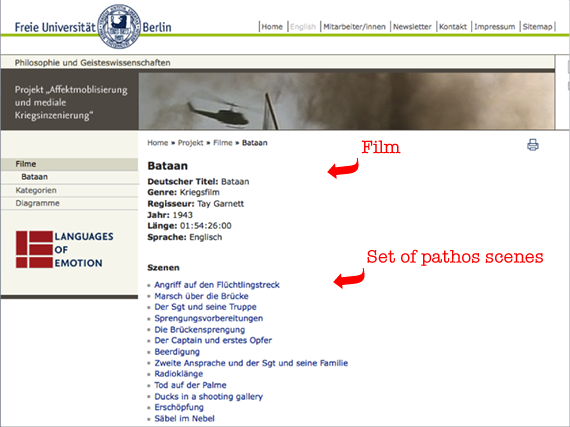
The list of categories of pathos scenes.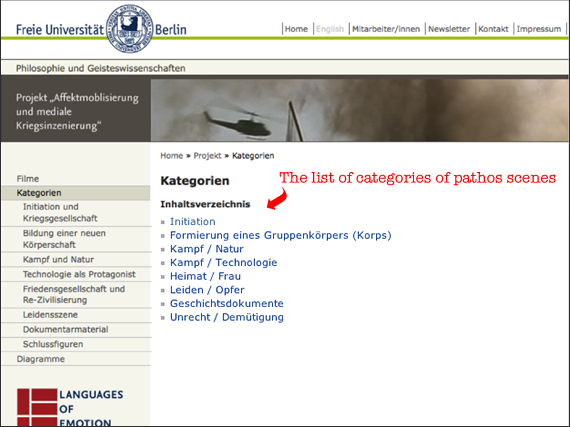
It is possible to brows through all the films by each type of pathos scenes. In this way the war film genre, represented by our group of films, is now accessible by types of pathos scene.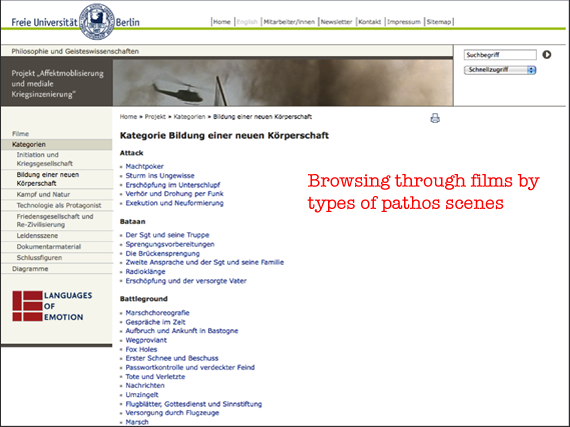
The page of each pathos scene shows how it is classified.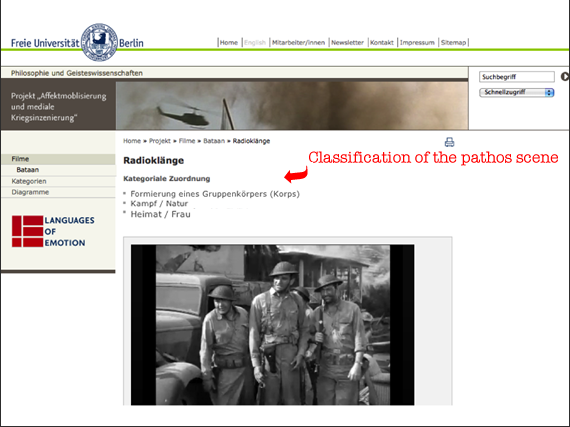
On every page of a pathos scene the scene is integrated as a clip, so that it is possible to directly relate the audiovisual object to the analytic text underneath, describing the composition of the scene. Thus, in a comprehensible way, we make the pathos scenes recognizable by the forms of cinematic expression.
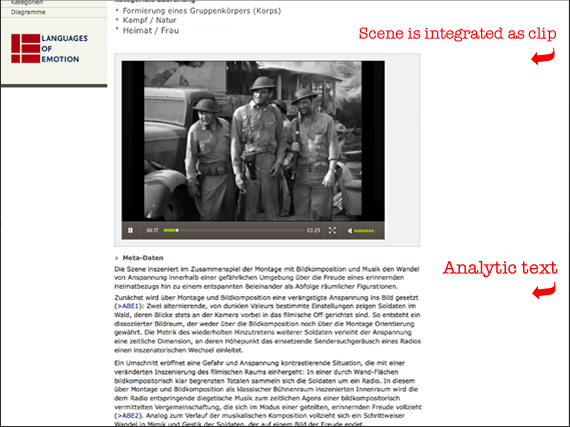
In the analytic texts and at the bottom of the page there are links to the expressive movement units this scene consists of. So just as the film is organized as set of pathos scenes on the macro-level, the single scene is organized as set of expressive movement units on the micro-level.
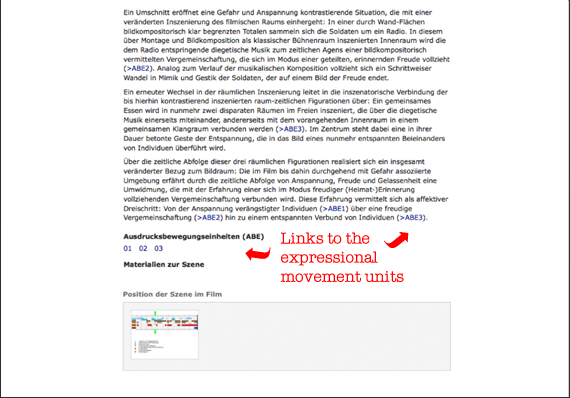
The pages of the expressive movement units are designed accordingly: with media-clip, analytic text, link-structures and space for additional material. So here too, the description of dynamic patterns and audiovisual composition goes along with the moving image.
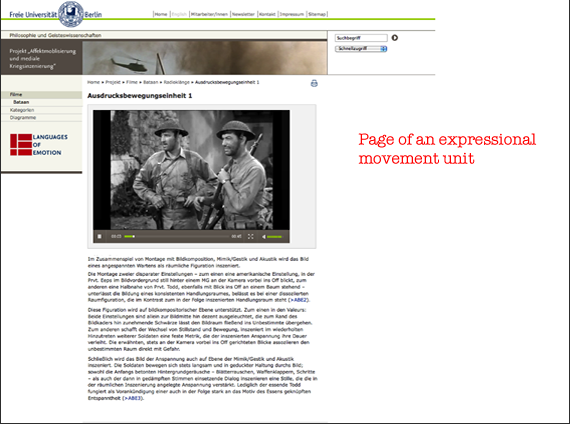
The completed diagram of the analysis system:
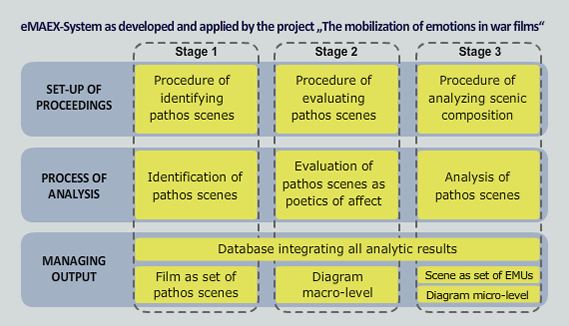
After identifying, evaluating and analyzing pathos scenes we perform advanced studies based on the database and its structure.
These studies explore the historical changes in the war film genre by focusing the deflection of pathos scenes. They also result in a media history of pathos by comparing the audiovisual forms of expression in war film.
For these studies an internet platform makes the database accessible as a research tool. This internet platform also facilitates our multimedia based publications which results from the advanced studies.
Publication: Kappelhoff, H., Bakels, J.-H. (2011). Das Zuschauergefühl - Möglichkeiten qualitativer Medienanalyse. Zeitschrift für Medienwissenschaft 5 (2).






